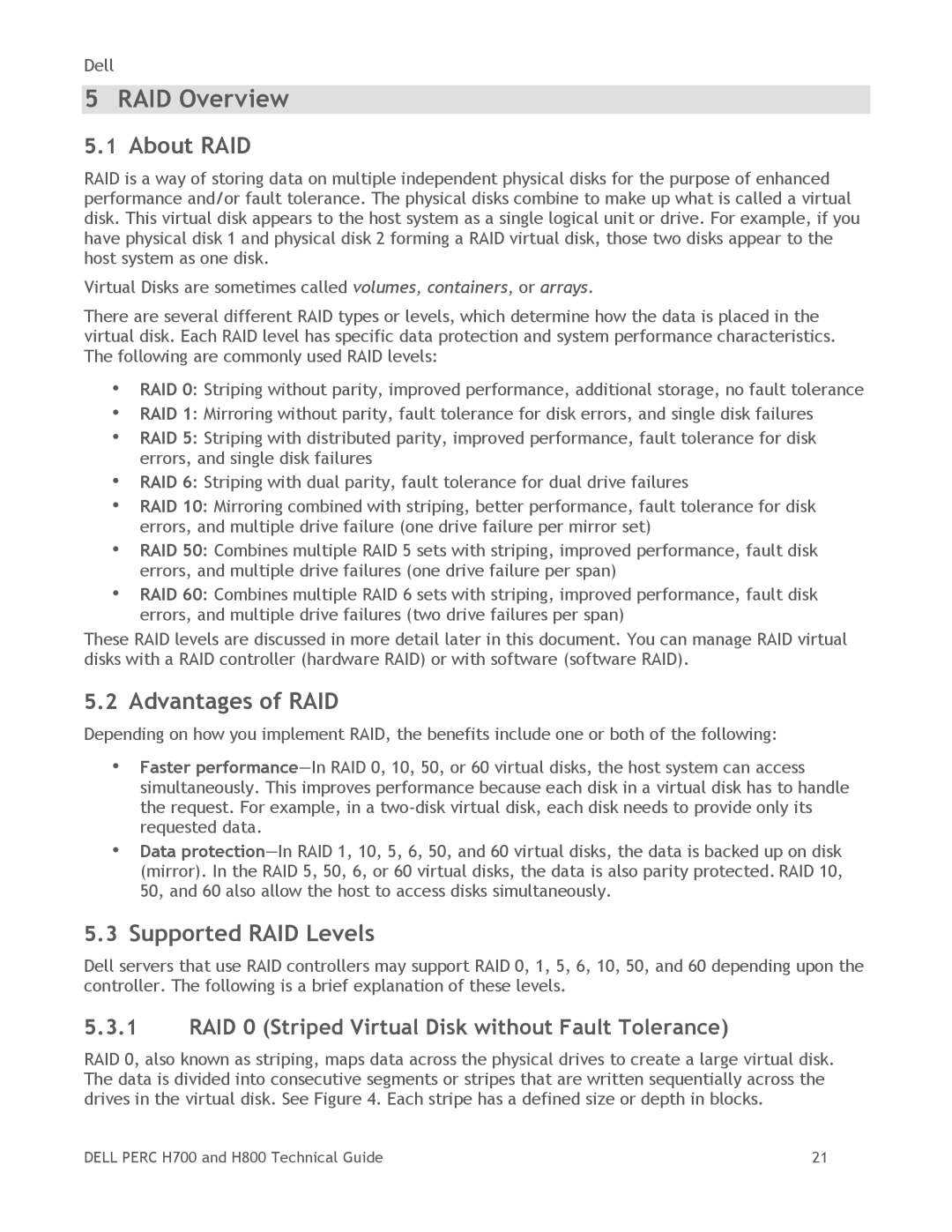Dell
5 RAID Overview
5.1About RAID
RAID is a way of storing data on multiple independent physical disks for the purpose of enhanced performance and/or fault tolerance. The physical disks combine to make up what is called a virtual disk. This virtual disk appears to the host system as a single logical unit or drive. For example, if you have physical disk 1 and physical disk 2 forming a RAID virtual disk, those two disks appear to the host system as one disk.
Virtual Disks are sometimes called volumes, containers, or arrays.
There are several different RAID types or levels, which determine how the data is placed in the virtual disk. Each RAID level has specific data protection and system performance characteristics. The following are commonly used RAID levels:
•RAID 0: Striping without parity, improved performance, additional storage, no fault tolerance
•RAID 1: Mirroring without parity, fault tolerance for disk errors, and single disk failures
•RAID 5: Striping with distributed parity, improved performance, fault tolerance for disk errors, and single disk failures
•RAID 6: Striping with dual parity, fault tolerance for dual drive failures
•RAID 10: Mirroring combined with striping, better performance, fault tolerance for disk errors, and multiple drive failure (one drive failure per mirror set)
•RAID 50: Combines multiple RAID 5 sets with striping, improved performance, fault disk errors, and multiple drive failures (one drive failure per span)
•RAID 60: Combines multiple RAID 6 sets with striping, improved performance, fault disk errors, and multiple drive failures (two drive failures per span)
These RAID levels are discussed in more detail later in this document. You can manage RAID virtual disks with a RAID controller (hardware RAID) or with software (software RAID).
5.2Advantages of RAID
Depending on how you implement RAID, the benefits include one or both of the following:
•Faster
•Data
5.3Supported RAID Levels
Dell servers that use RAID controllers may support RAID 0, 1, 5, 6, 10, 50, and 60 depending upon the controller. The following is a brief explanation of these levels.
5.3.1RAID 0 (Striped Virtual Disk without Fault Tolerance)
RAID 0, also known as striping, maps data across the physical drives to create a large virtual disk. The data is divided into consecutive segments or stripes that are written sequentially across the drives in the virtual disk. See Figure 4. Each stripe has a defined size or depth in blocks.
DELL PERC H700 and H800 Technical Guide | 21 |
